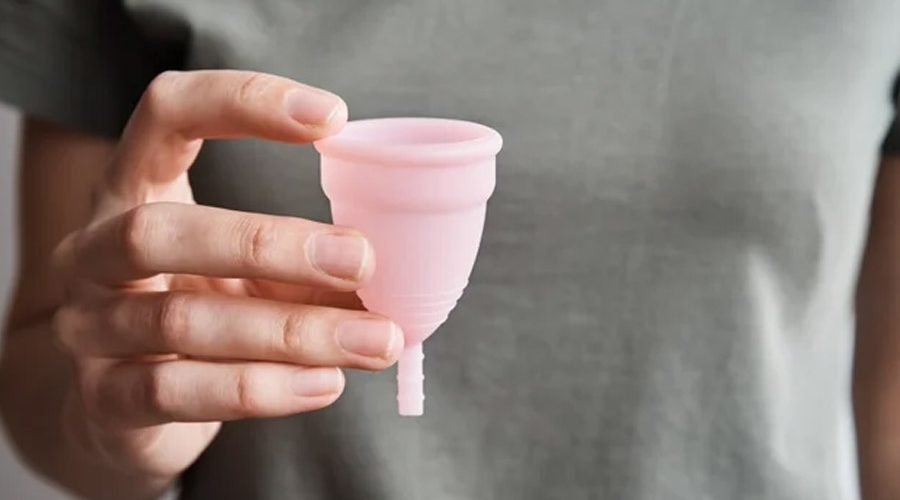Not familiar with a menstrual cup or how it functions? It’s not just you. Although menstrual cups were developed in the 1930s, they have only recently experienced a surge in popularity.
There are a variety of menstrual items available today, from menstrual discs to traditional tampons and pads. However, the finest menstrual cups provide significant advantages over these alternatives. Period cups are desirable for several reasons, including their low price, reduced waste, and favorable effect on the environment.
Table of Contents
What Is a Menstrual Cup?
Bell-shaped menstrual cups are inserted vaginally to catch blood and prevent vaginal bleeding. Most are designed with a stem or loop for simple insertion and removal. Although silicone is a common material for them, latex or rubber are also viable options. Rather than absorbing blood, the cups simply collect it. When it’s full, you may pull out the cup, flush the toilet, rinse the cup, and put it back in. They have a 12-hour wear time, give or take, depending on your flow.
Advantages of Using a Menstrual Cup
Using a menstrual cup has many advantages:
- Because of its durability and multiple uses, a menstrual cup can save money over the long run compared to disposable alternatives like tampons and pads. There is a rapid return on investment.
- Vaginal discomfort and dryness have been alleviated. Pads and tampons both have the potential to irritate the vaginal lining, although tampons tend to be more uncomfortable. When utilizing a menstrual cup, you won’t have that problem.
- Cleanup time and stink factor go down. Once a woman is comfortable with the removal process, she will discover that the menstrual cup is highly hygienic to use. Also, unlike when using a pad, the blood won’t be exposed to air, meaning less unpleasant odors for the majority of women.
- Fewer leaks. Menstrual cups form a seal when inserted properly, thus reducing the risk of leakage.
- Greater durability. Unlike tampons, which should be changed after eight hours, menstrual cups can be used continuously for up to twelve. Emptying the cup every eight hours and changing pads or tampons every four hours is recommended for women.
Downsides of Using a Menstrual Cup
Using a menstrual cup is not without its drawbacks:
- Discomfort if put in correctly. Using a menstrual cup can feel awkward at first, especially if you insert it improperly or aren’t used to doing so. Some ladies can’t utilize it because of their vaginal anatomy.
- Cleaning it in public. Some women find it inconvenient to use the menstrual cup outside the house because it must be removed, cleaned with soap and water, and then reinserted each time menstruation starts.
Guide to Using a Menstrual Cup
Inserting a menstrual cup properly is as easy as following these instructions;
- Undoubtedly, you need to clean your hands.
- Slightly moisten the rim of the cup with water or a water-based lubricant. When doing so, inserting will be less of a hassle.
- The menstruation cup should be folded in half. hold the folded cup and keep the rim facing upwards.
- Go ahead and put the cup in. Insert it inside your vagina while still folded with the rim facing upward. Insert the cup the same way you would a tampon.
- Change its direction. After this, turn it to fully open it, And rest a few inches below your cervix. You shouldn’t feel it if it’s inserted correctly.
However, you can consult the best gynecologist in Karachi if you face any difficulty using the menstrual cup.
Removing a menstrual cup
Are you prepared to pull out a cup? See below for instructions on how to proceed.
- Certainly, you need to clean your hands.
- The cup can be easily popped out by pinching the bottom. Keep the cup between your thumb and index finger and insert it into your vagina. You’ll be able to remove the seal when you break it. Gently pull downwards to unfasten.
- Empty cup. When you’re done using the cup, toss it in the toilet.
- Scrub the mug. Use clean water and a fragrance-free mild soap to scrub the cup.
Consult a gynecologist in Lahore in case you face any trouble removing the cup.
What Qualities Should a Good Menstrual Cup Have?
When deciding between different types of menstruation cups, there are a few things to keep in mind:
- Consider the dimensions. Menstrual cups come in a variety of sizes from different manufacturers. There is a noticeable difference in vagina size between women who have and have not given birth.
- The form. Some menstruation cups will be more convenient for use than others for any given menstruator. Bell-shaped cups, V-shaped cups, round cups, and ergonomic cups, which have a sloping body and rim, are but a few of the many cup shapes available.
- How much liquid can be stored in it? To bleed more easily than others is a trait shared by some but not all humans. If your period flow is moderate, go with a smaller cup, and if it’s heavy, go with a larger one.
Conclusion
The market is stocked with a variety of menstruation cups that are tailored to accommodate a variety of anatomy, including low cervixes, heavy flows, and wide-set vaginas, so there’s no need to settle for a one-size-fits-all solution. For information on its safe use and potential negative effects, consult the best gynecologist in Lahore.
FAQs
1. How long can a menstrual cup be kept inside?
Depending on how thick your period is, a menstrual cup can be worn for anywhere between 6 and 12 hours. As a result, you can sleep safely with a cup on overnight. The 12-hour mark is the cutoff time for when you should remove your menstrual cup.
2. What are the risks of using a menstrual cup?
As long as one observes the precautions, using a menstrual cup is risk-free. In comparison to tampons, there is no evidence to suggest that they pose a greater risk. Pain, bladder issues, and infections are rare side effects of menstruation cups.
3. Why does my menstrual cup leak after a few hours?
The majority of leaks occur because the cup edges have not fully expanded to make a seal with the vaginal walls. This happens often to first-time cup users.





